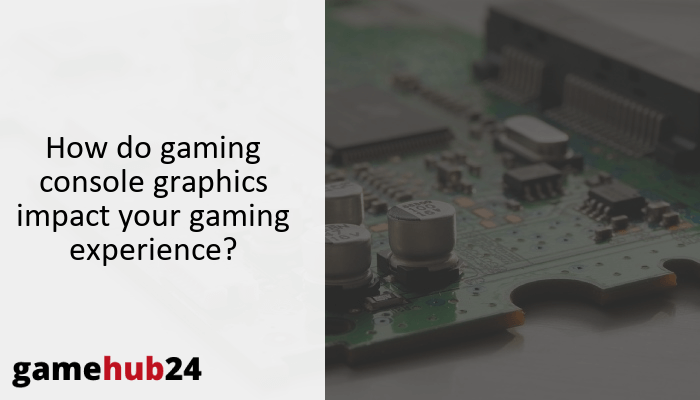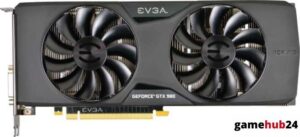Anisotropic filtering, texture mapping, anti-aliasing, and the GPU are just a few of the essential components in the intricate and fascinating world of gaming console graphics. The evolution of graphics across console generations can be used to illustrate how important frame rate, resolution, and new technologies such as HDR and ray tracing are to the entire gaming experience.
Discover the intricacies of graphics on gaming consoles, including texture mapping, anisotropic filtering, and the importance of the GPU in producing amazing images. Learn how console generations have advanced display technology and how improvements in resolution, frame rate, and technologies like HDR and ray tracing improve the gaming experience. Find out how the graphics on consoles such as the PlayStation 5, Xbox Series X, and Nintendo Switch differ from one another and how game optimization works to produce the optimal visual experience.
- Understand the role of the GPU in rendering game visuals and how texture mapping adds depth and realism to 3D models.
- Discover how anti-aliasing smooths jagged edges and anisotropic filtering maintains texture quality.
- Explore the evolution of graphics across console generations and the differences in performance between the PlayStation 5, Xbox Series X, and Nintendo Switch.
- Learn about the impact of resolution and frame rate on the gaming experience and how technologies like ray tracing and HDR enhance visuals.
- Delve into game optimization techniques like V-sync, game engine optimization, and the use of APIs like DirectX.
| Component | Description | Example |
|---|---|---|
| GPU (Graphics Processing Unit) | Responsible for rendering visuals and animations in games. | GPU in PlayStation 5 by AMD |
| Texture Mapping | Applies detailed surfaces to 3D models, enhancing visual depth and realism. | Used in games like Crysis for realistic landscapes and character models |
| Anti-aliasing | Smoothens jagged edges in graphics, resulting in more natural-looking visuals. | Used in most modern games for smoother graphics |
| Anisotropic Filtering | Maintains texture quality when viewed at oblique angles or from a distance. | Used in most modern games for maintaining texture quality |
| Resolution | Refers to the number of pixels displayed on the screen, with higher resolutions offering more detailed and sharper images. | 4K and 8K gaming in PlayStation 5 and Xbox Series X |
| Frame Rate | Refers to the number of frames displayed per second, with higher frame rates resulting in smoother and more fluid motion. | 60 fps or 120 fps in games like Doom Eternal |
| HDR (High Dynamic Range) Gaming | Enhances the visual output by expanding the color and contrast range. | Used in games like Horizon Zero Dawn and God of War |
| Ray Tracing | Simulates the physical behavior of light, resulting in more realistic lighting, shadows, and reflections. | Used in games like Cyberpunk 2077 and Metro Exodus |
This table provides a summary of the key components involved in gaming console graphics, their descriptions, and examples of their use in games or consoles.
What are the key components of gaming console graphics?
When delving into the world of game console graphics, it is impossible to ignore the crucial roles played by a few essential elements. Any gaming console’s GPU (Graphics Processing Unit) is its brains; it’s what produces the elaborate animations and breathtaking graphics that players expect. Texture mapping is a technique that adds authenticity and depth to 3D objects by applying realistic surfaces. This improves the visual experience. Other essential components that operate in the background to maintain texture quality and smooth jagged edges are anti-aliasing and anisotropic filtering. Together, these elements produce the immersive gaming experiences that we have been accustomed to.
What role does the GPU play in gaming console graphics?
The GPU is crucial to the display quality of gaming devices. In order to bring gaming environments to life, this powerful component must perform the heavy lifting of handling intricate shaders and rendering millions of polygons. The performance of the GPU has a direct impact on how well the console can handle high resolutions and steady frame rates. For example, the AMD-developed GPU in the PlayStation 5 can produce visually stunning gameplay in titles like Metro Exodus and Far Cry 5.
How does texture mapping enhance the visual experience?
In video game graphics performance, texture mapping is a crucial technology that applies finely detailed images to 3D models’ surfaces. Through this technique, flat, monochromatic polygons are transformed into convincing objects and environments, adding a degree of realism to the gameplay. Texture mapping is used in games like Crysis, created by Crytek, to produce incredibly realistic character models and landscapes, greatly increasing the visual immersion.
You may not be aware, but your computer’s GPU and your game console share similarities. Both are made to manage intricate computations involved in the production of visuals. Nevertheless, unlike PC GPUs, which must support a variety of hardware configurations, console GPUs are usually tuned for a particular hardware configuration.
What is the function of anti-aliasing and anisotropic filtering?
Two unsung champions of gaming console graphic performance are anti-aliasing and anisotropic filtering. When rendering polygons, anti-aliasing reduces the possibility of jagged edges, producing smoother, more realistic-looking images. In contrast, anisotropic filtering preserves texture quality when viewed from a distance or at an angle. Together, these features make sure that a game console’s visual output is clear and lifelike at all viewing angles and distances.
How do different console generations compare in terms of graphics?
There is no denying the progression of visuals as we move from one console generation to the next. With every iteration, gaming system display technology has advanced, from the charming pixelated graphics of the NES to the stunning photorealistic pictures of the PlayStation 5. Higher resolutions and more intricate textures are only two aspects of the leap in graphic quality; other factors include more intricate lighting, improved animations, and more immersive surroundings.
How does the PlayStation 5’s graphics compare to the Xbox Series X?
It is evident from a comparison of the Xbox Series X and PlayStation 5 that both systems offer a huge improvement in visual performance. Both consoles have strong GPUs that can achieve up to 8K resolution, fast frame rates, and real-time ray tracing. But although the PlayStation 5 shines in terms of its in-house SSD and audio technology, the Xbox Series X has a tiny advantage in terms of raw GPU power, which could lead to slightly superior performance in some titles.
Where does the Nintendo Switch stand in terms of graphics?
In terms of visuals, the Nintendo Switch is competitive even though it doesn’t have the same processing capacity as the PlayStation 5 or Xbox Series X. The hybrid design of the Switch, which allows for both docked and handheld play, is one of its key selling points. Games like Super Mario Odyssey and The Legend of Zelda: Breath of the Wild demonstrate the platform’s capacity to produce vivid, detailed, and fluid images even though it may not support ray tracing or 4K. This proves that raw power isn’t everything when it comes to gaming console visuals.
Here’s a great tip to get the most out of your gaming: if your TV and console support HDR (High Dynamic Range), turn it on. Your games’ color and contrast can be greatly improved with HDR, giving them a more vivid and realistic appearance than they ever had.
How have graphics evolved from one console generation to another?
The progression of game system visuals has been nothing short of astounding, spanning from the 8-bit era of the NES to the 4K realism of the PlayStation 5. Significant improvements in GPU power, texture quality, and rendering methods have been made with every generation. The transition from the PlayStation 1 to the PlayStation 2 brought gamers into the realm of three-dimensional visuals and dynamic lighting. Likewise, the shift from the Xbox 360 to the Xbox One signified the advent of the high-definition gaming era. Every each console generation offers a noticeably better visual experience thanks to this ongoing innovation.
What is the role of game resolution and frame rate in gaming graphics?
A gaming system’s visuals are based on two key principles: resolution and frame rate. Higher resolutions provide crisper, more detailed images on the screen. Resolution is defined as the amount of pixels visible on the screen. Contrarily, frame rate describes how many frames are shown in a second; greater frame rates lead to action that is more fluid and smooth. These two elements are essential in determining how immersive and high-quality the gaming experience is.
What is the difference between 4K gaming and 8K gaming?
The highest resolution available for video game consoles is found in 4K and 8K gaming. 8K gaming surpasses 4K gaming by offering an astounding 7680 x 4320 pixels, whereas 4K gaming gives a resolution of 3840 x 2160 pixels. This increase in pixel count produces extremely realistic and detailed images. But moving from 4K to 8K also requires a far more powerful GPU and a suitable monitor, so for most gamers, it’s now an extravagance.
How does frame rate affect the gaming experience?
A crucial element in the responsiveness and smoothness of game console graphics is frame rate. Smoother motion and reduced input lag are produced by greater frame rates, such 60 or even 120 frames per second (fps), which might provide players an advantage in fast-paced games. However, a strong GPU and a high refresh rate display are needed to achieve high frame rates. Doom Eternal is one game that exemplifies the advantages of high frame rates because to its fast-paced gameplay.
What is HDR gaming and how does it enhance graphics?
High Dynamic Range (HDR) gaming is a technology that increases a game’s color and contrast range to improve its visual output. This gives the game a new level of depth and realism by producing more vivid colors, deeper blacks, and brighter whites. Playing games on an HDR-compatible monitor, such as God of War and Horizon Zero Dawn, demonstrates the significant impact that this technology can have.
How does ray tracing contribute to gaming graphics?
With the use of cutting-edge ray tracing technology, lighting, shadows, and reflections may be produced with greater realism by mimicking the actual behavior of light. Thanks to this technology, game environments feel more realistic and visually immersive. Ray tracing is presently limited to high-end consoles such as the Xbox Series X and the PlayStation 5, due to its computing demands.
What is ray tracing and how does it work in games?
A method for simulating how light interacts with objects in a virtual world is called ray tracing. From the source to the observer, it tracks the direction of light beams and determines the color, strength, and angle of reflection or refraction at each intersection. As a result, the lighting, shadows, and reflections are incredibly lifelike. Ray tracing has a revolutionary effect on game console graphics, as seen by titles like Cyberpunk 2077 and Metro Exodus.
How do AMD Radeon and Nvidia GeForce handle ray tracing?
Ray tracing has been adopted by Nvidia GeForce and AMD Radeon in their most recent GPUs. Real-time ray tracing in games was initially introduced by Nvidia’s RTX series, which used specialized RT cores to manage the intricate computations. In contrast, AMD’s Radeon RX 6000 series has an alternative strategy that incorporates ray accelerators into every computing unit. Although they both do the same thing, the two methods take distinct tacks when it comes to using ray tracing to create images for game consoles.
What are the game optimization techniques for better graphics?
Finding the ideal balance between performance and visual quality is crucial when optimizing game visuals. While keeping smooth speed, methods like V-sync, game engine optimization, and the use of APIs like DirectX can greatly improve the visual output. By using these methods, players can get the greatest images without sacrificing the responsiveness of the game.
How does V-sync improve the visual output?
In order to avoid screen tearing, a technique known as vertical synchronization, or V-sync, synchronizes a game’s frame rate with the refresh rate of the display. When the GPU delivers a new frame while the display is still rendering the previous one, it causes screen tearing, which can cause visual artifacts that interfere with gameplay. V-sync makes sure that the frame rate and refresh rate are in sync, which makes for a more fluid and visually appealing gaming experience.

What role does the game engine play in graphics optimization?
An essential component of visual optimization is the game engine. It is the framework for software used by developers to design and improve games, managing AI, physics computations, and rendering. Even on less powerful hardware, a well-optimized game engine may produce amazing images without sacrificing fluid performance. High-end consoles to mobile devices—engines like Unreal Engine and Unity are well known for their capacity to produce graphics of the highest caliber on a variety of platforms.
How does DirectX contribute to game optimization?
Microsoft created DirectX, a set of APIs (Application Programming Interfaces) that manages Windows platform game programming responsibilities. Because it gives developers a standardized set of tools for tasks like handling input, processing sound, and generating 3D visuals, DirectX is essential to game optimization. DirectX 12, the most recent version, has increased features including multi-core performance and low-level hardware abstraction, which let developers take full advantage of the technology and produce better graphics.

















